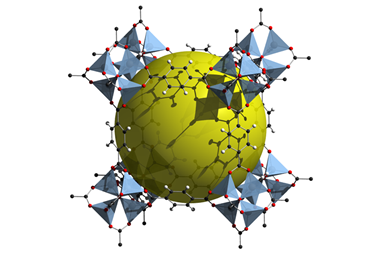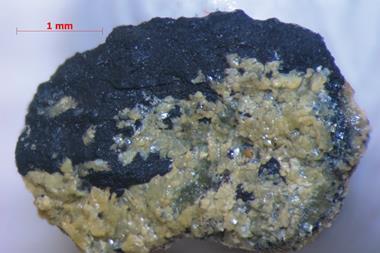Mechanical engineering sheds light on rigidity of porous frameworks
Chemists can repurpose concepts from mechanical engineering when trying to develop metal–organic frameworks (MOFs), according to researchers in the UK. The finding could offer a fresh perspective for scientists trying to make MOFs with improved features.1

MOFs consist of metal ions linked by ligands to form an extended three-dimensional network with high surface areas and porosities. This volume within the crystal means that MOFs have already found applications in gas storage and adsorption. However, while MOFs may have good primary properties, they also require good mechanical properties for long-term stability and use. Many thousands of MOFs exist, each with a varying degree of flexibility, and the more rigid the structure, the better the mechanical properties.
Now, Arnaud Marmier and Ken Evans from University of Exeter have looked to mechanical engineering to see if this can help chemists better understand MOFs. By modelling MOFs as linkers and joints, rather like a meccano set, and then applying symmetry rules, known as group theory, they could predict the flexibility of these 3D structures.
Marmier is modest about the findings, saying this study simply builds on the work of Patrick Fowler and Simon Guest,2 who initially applied rules from mechanical engineering to study zeolitic structures. In this latest study, Marmier and Evans outline a more straightforward derivation to make the method easily understandable and applicable.
Lev Sarkisov, an expert in molecular simulation at University of Edinburgh, UK, believes that being able to predict the structural flexibility of MOFs will make it easier to screen and tailor these porous materials for specific applications. With guidance from simulations and experiments, Sarkisov believes it is imperative that chemistry, engineering and other disciplines unite to give advances and new concepts not necessarily associated with ‘pure’ chemistry.
This method is simple enough to work through using pen and paper, but Marmier realises that it is not practical when thousands of MOFs exist. In future, a significant effort is required to automate the method and develop an algorithm to investigate the mechanical properties of MOFs. Sarkisov agrees, stating ‘this is not a trivial problem, given the diversity of MOF structures and chemistries.’
References
1 A Marmier and K E Evans, Dalton Trans., 2015, DOI: 10.1039/c5dt03586d
2 S D Guest and P W Fowler, Philos. Trans. R. Soc., A, 2014, 372, 20120029, DOI: 10.1098/rsta.2012.0029 and references therein












No comments yet